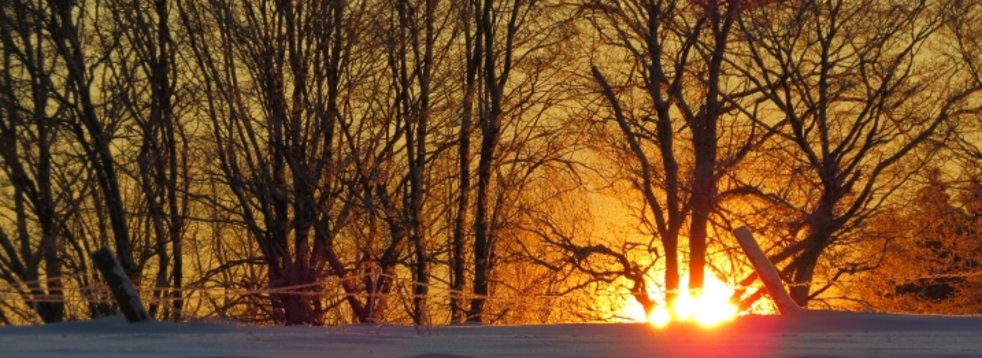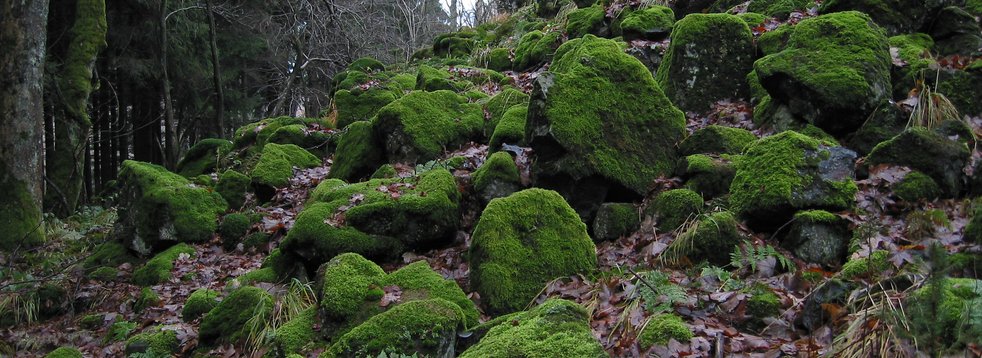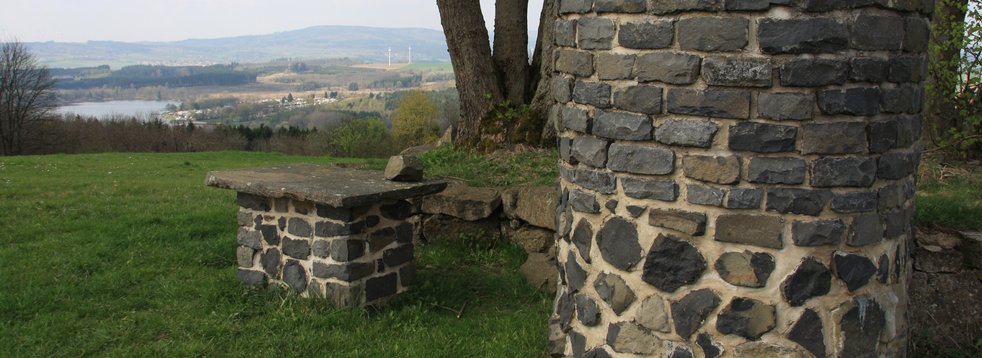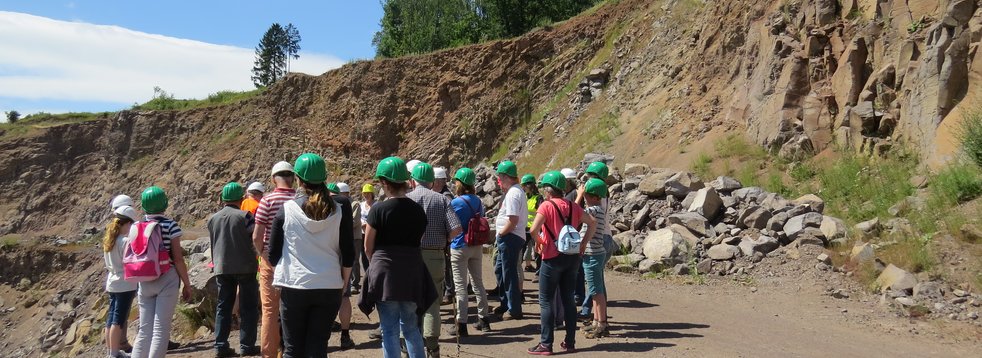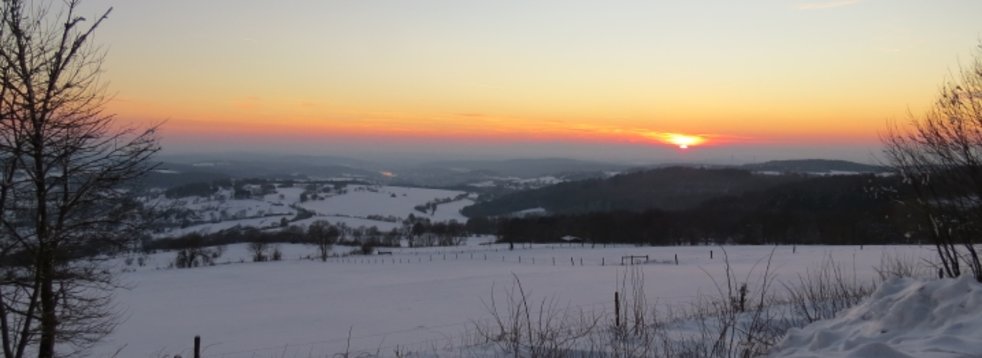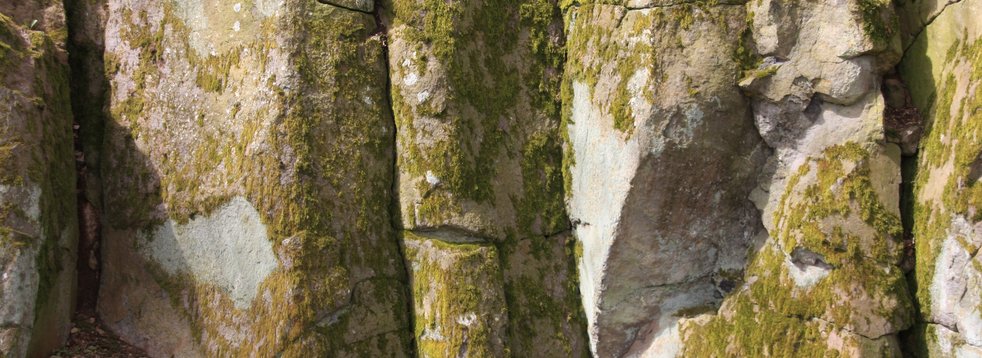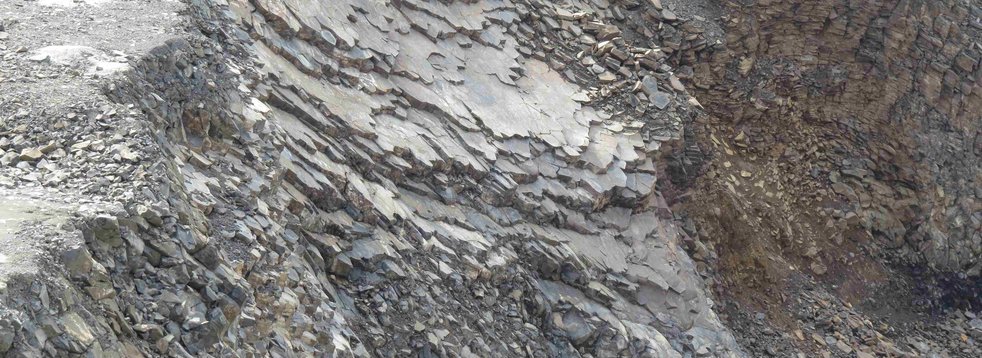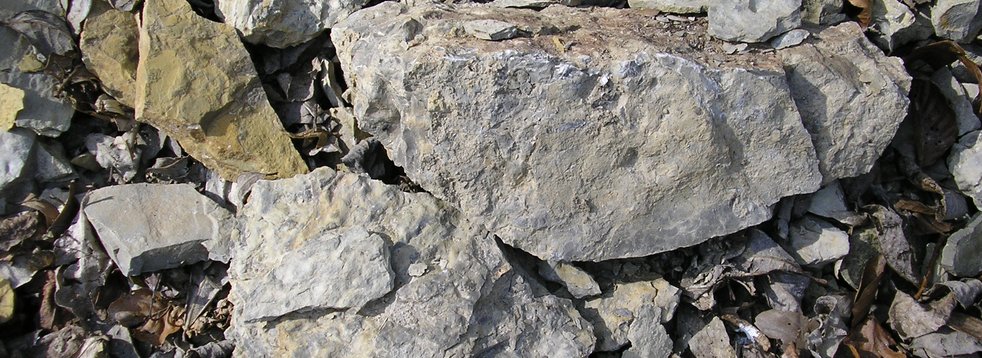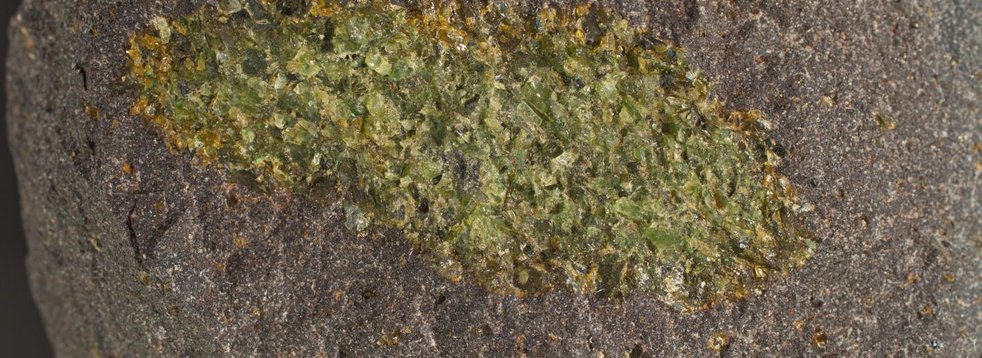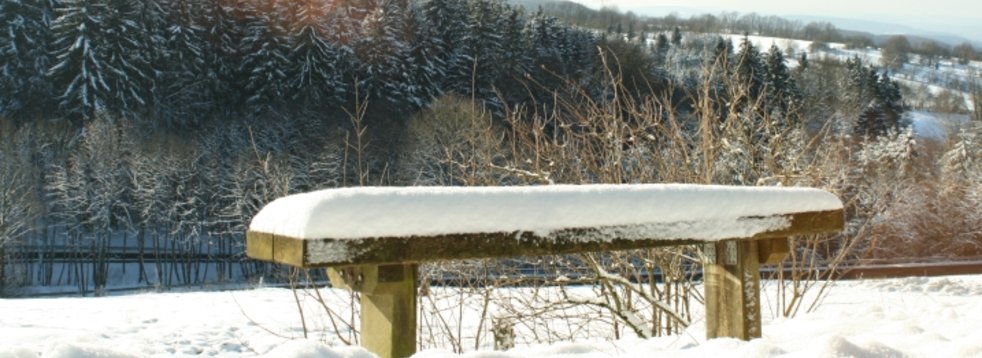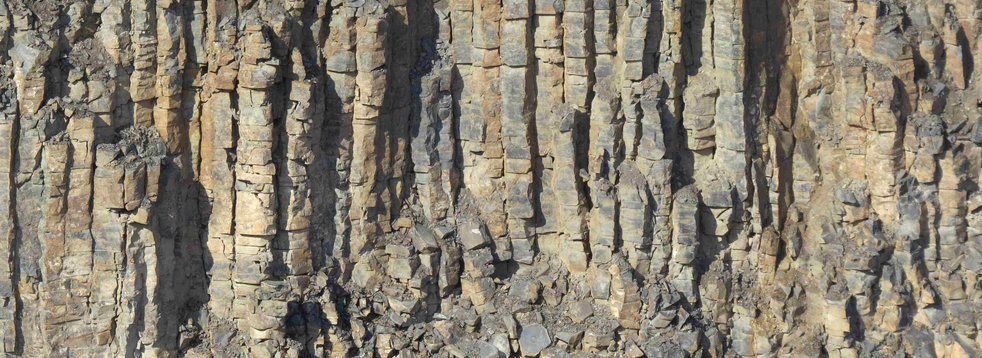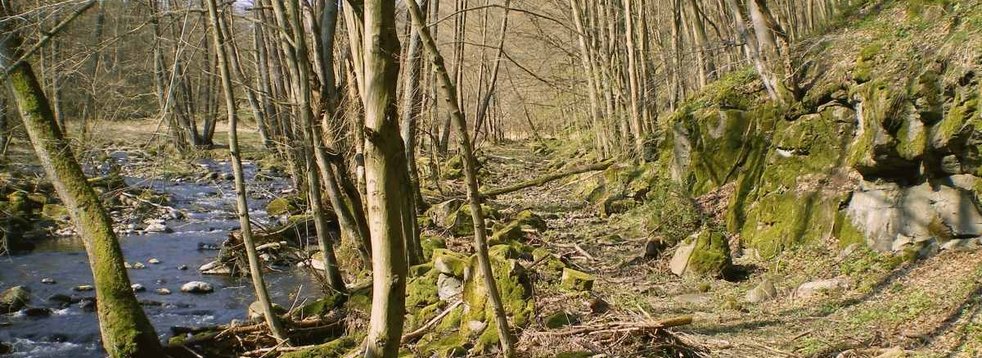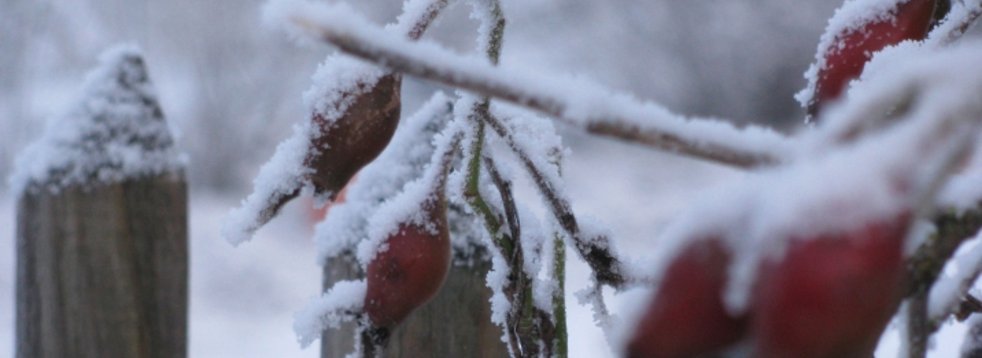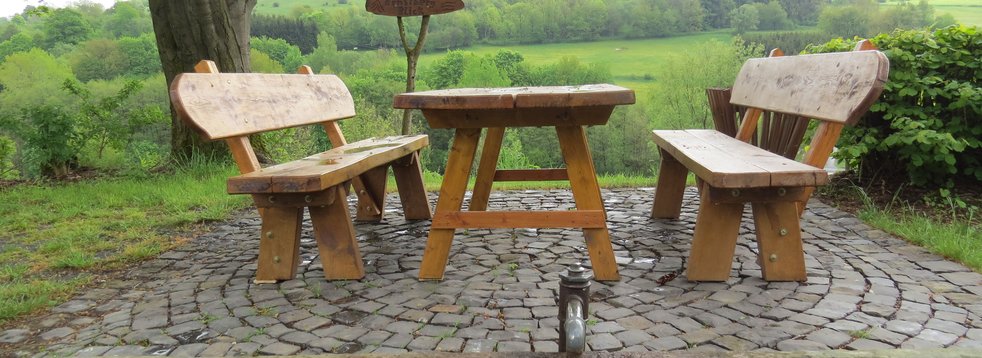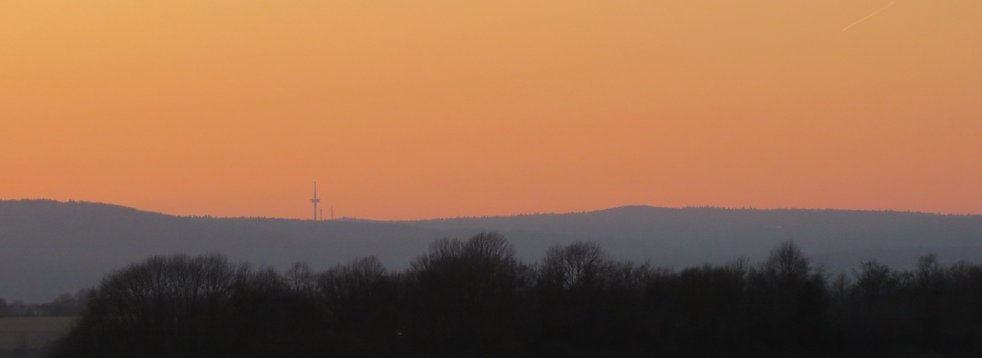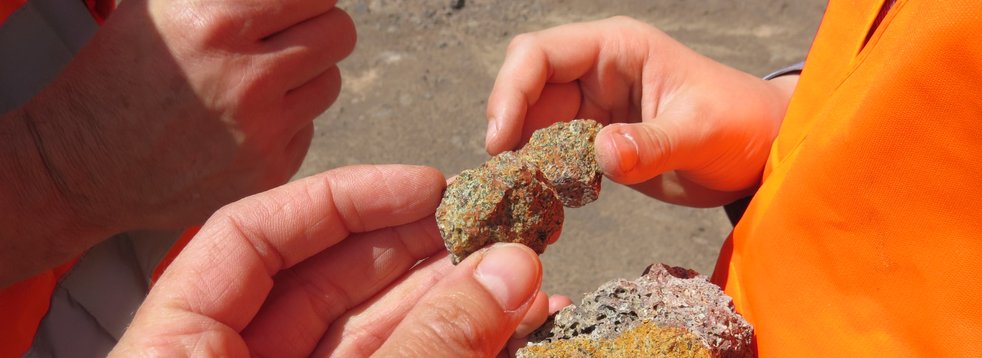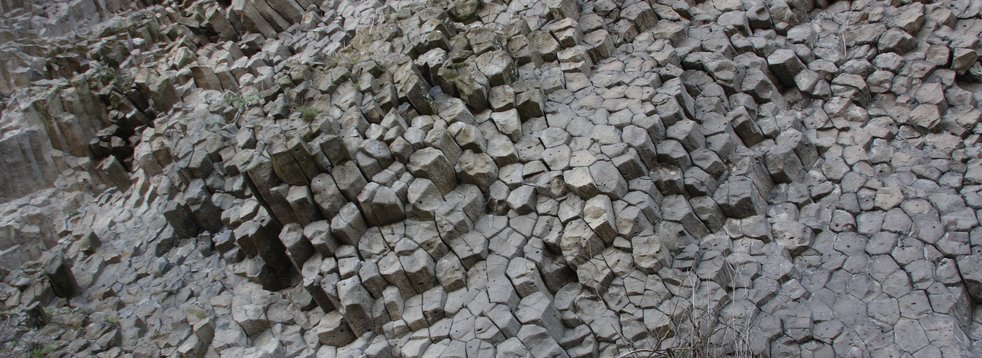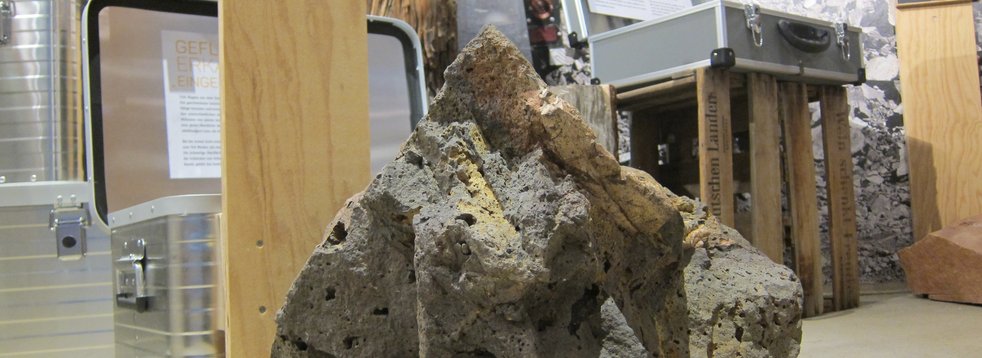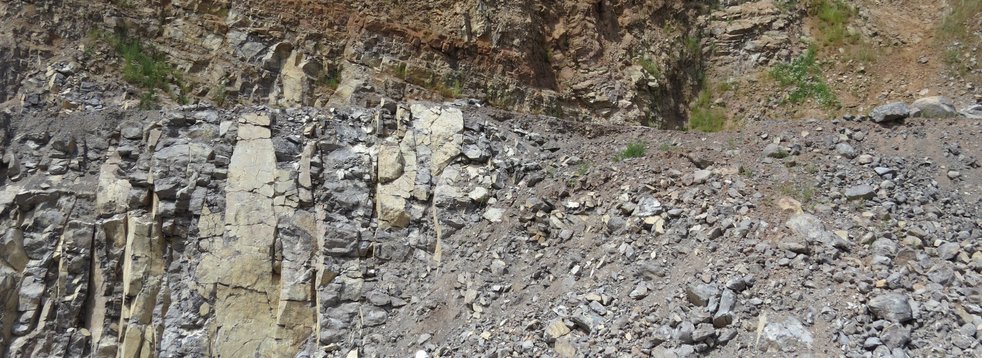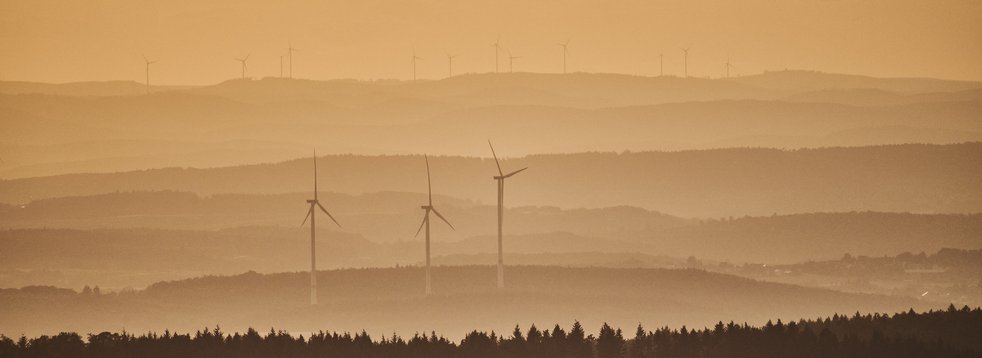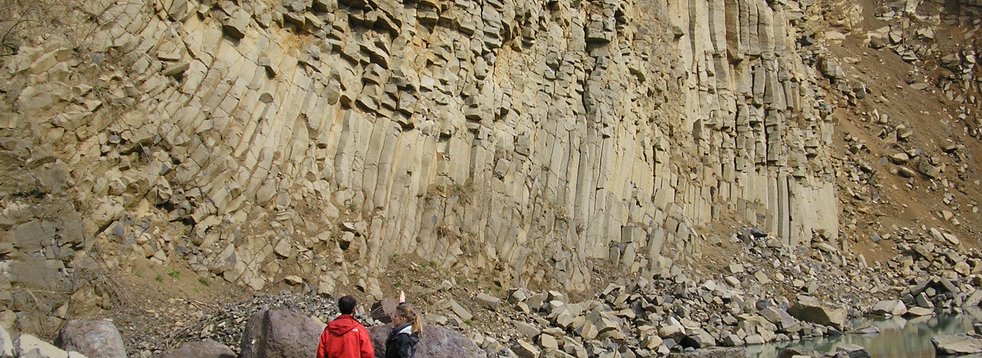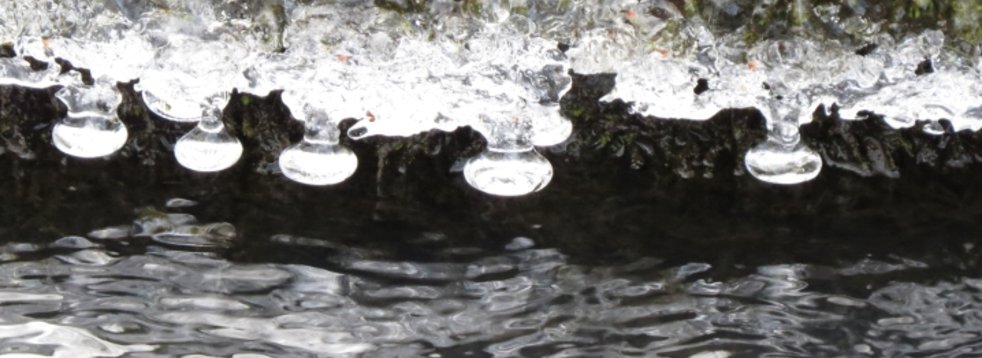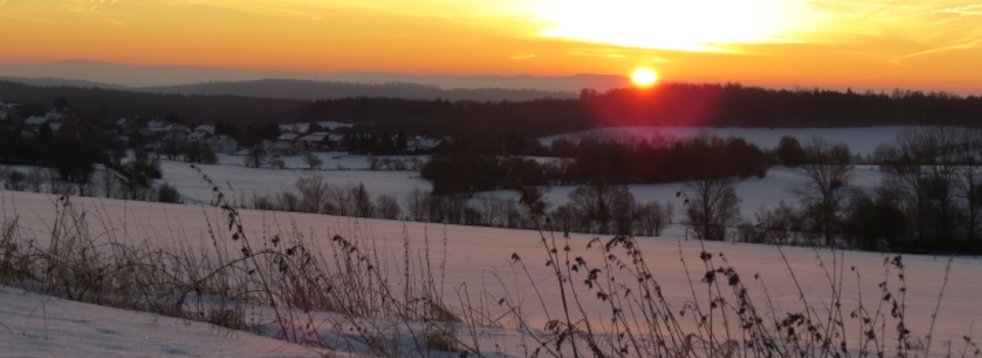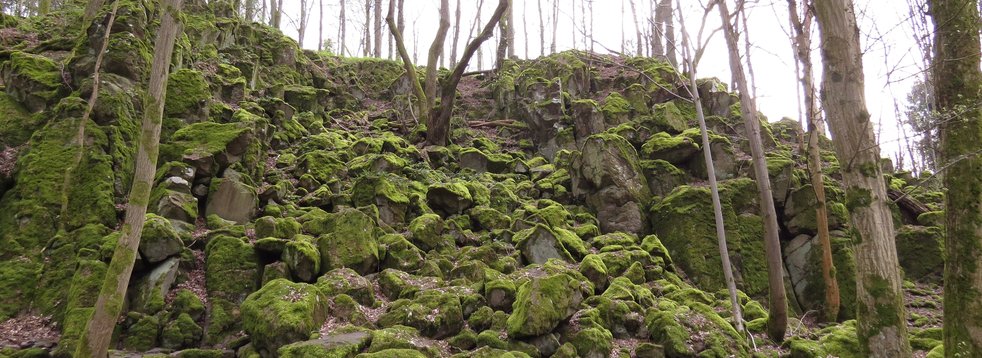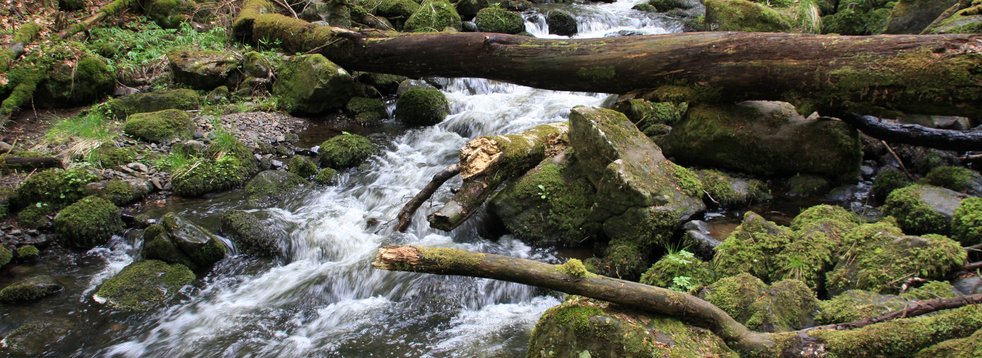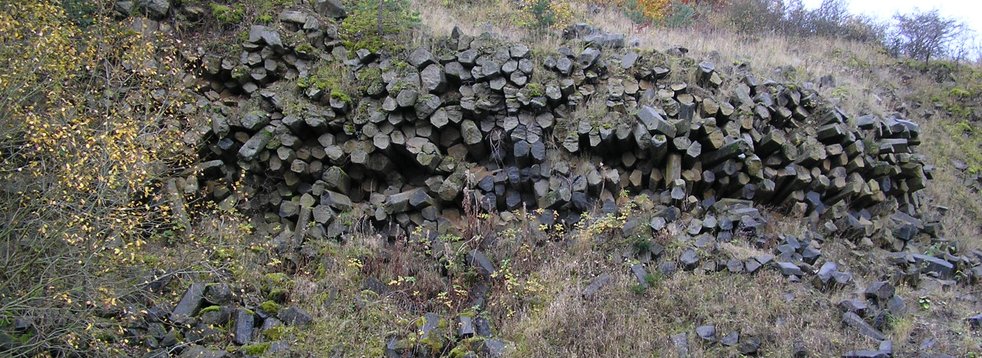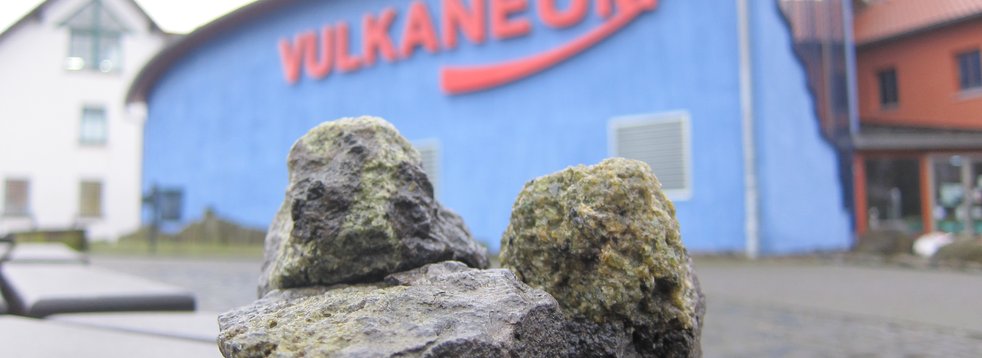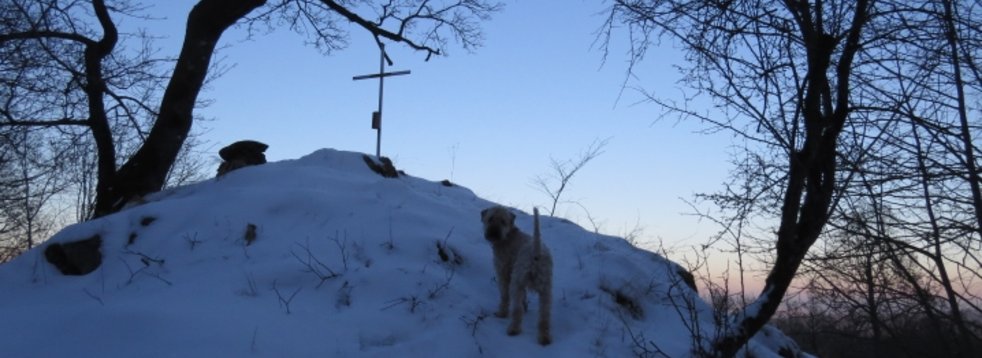Bilstein
The 665.5 m high Bilstein, situated above Schotten-Busenborn, is an impressive rock cliff and the highest elevation of a north-south striking ridge. The geotope and natural monument consists of platy-banked separate rocks, with the slabs standing almost vertically and having an inclination of 70 degrees perpendicular to the longitudinal direction of the cliff. Basanite with many olivine nodules is the main material of the Bilstein, which is formed by a very fine-grained matrix, which also contains plagioclase and ore.
The Bilstein is not only geologically interesting, but also a wonderful lookout point, which opens the view up to the Taunus, the Rhine-Main area and the Gießener Land. According to a Vogelsberg legend, the Bilstein is the home of a mystical white woman, the so-called Else vom Bilstein. Every year in spring, the only crooked maypole in Germany is erected on the Bilstein by the single young men from Busenborn.
Souvenirs from the mantle
The rock is relatively poor in silicic acid (SiO2) and is called basanite - a subgroup of basalt. It also contains many fragments of the upper mantle (peridotite xenoliths). These show that the magma was transported more or less directly from the upper mantle to the surface without being chemically altered in the earth's crust. The rise of the magma was relatively fast, so that the fragments were carried away. These often appear olive green to brown. Among other things, the mineral olivine, which is typical for the earth's mantle, is responsible for this.
The fragments allow a rare insight into the chemical and mineralogical composition of the upper mantle of the earth, which remains blocked to this day due to the enormous pressure and the high temperature. Only these "souvenirs" of the volcanoes give us insights into the chemical and physical properties of the upper mantle, which begins here in Central Europe at a depth of about 30-35 km.
Plates
The flat and elongated arrangement of the rocks indicates a former crevice from which the magma was transported to the earth's surface. This fissure was probably part of a large fracture structure that allowed the magma to rise. This fracture structure running from north to south allowed magma to find its way to the surface elsewhere. For example, at the "Gackerstein", at the "Horst" near Rudingshain or on the castle hill of Ulrichstein.
What we can observe today at the Bilstein represents the inner part of the former crevasse. Only by the power of erosion were the rocks exposed over millions of years.
If basaltic lava cools down, it loses volume. This causes tensions within the rock. These are reduced by the formation of cracks, which ultimately led to the formation of slabs. The ends of the plates point in each case to the former direction of cooling - here these were the former walls of the crevice, which were colder than the magma. From these column walls, cracks (fissures) gradually formed due to the loss of volume.
Today's orientation and the structure of the stone thus provide information about the course of the fissure.
Location, reachability & walkability
The popular excursion destination can be reached via the Extratour GipfelTour (summit tour) for hikers. Only a short walk is necessary to reach the Bilstein on the European long-distance hiking trail E3 (blue St. Andrew's cross) from the hiking car park of the Vogelsberg Volcano Region Nature Park on the L3338 (between Breungeshain and Sichenhausen).
There are regular guided tours to the Bilstein, including the legend of the 'Else am Bilstein'.
- GPS N 50°29'45.0'' E 9°12'10.9''
- UTM 32 U 54399/5593781
[Translate to Englisch:] Literatur
- Ehrenberg, K.-H. & Hickethier, H. (1985). Die Basaltbasis im Vogelsberg. Schollenbau und Hinweise zur Entwicklung der vulkanischen Abfolge. Geol. Jb. Hessen (113), 97–135.
Francis P. & Oppenheimer, C. (2004). Volcanoes. Oxford University Press. New York.
Reischmann, T. & Schraft, A. (2009). Der Vogelsberg: Geotope im größten Vulkangebiet Mitteleuropas. Hessisches Landesamt für Naturschutz, Umwelt und Geologie. Wiesbaden.


